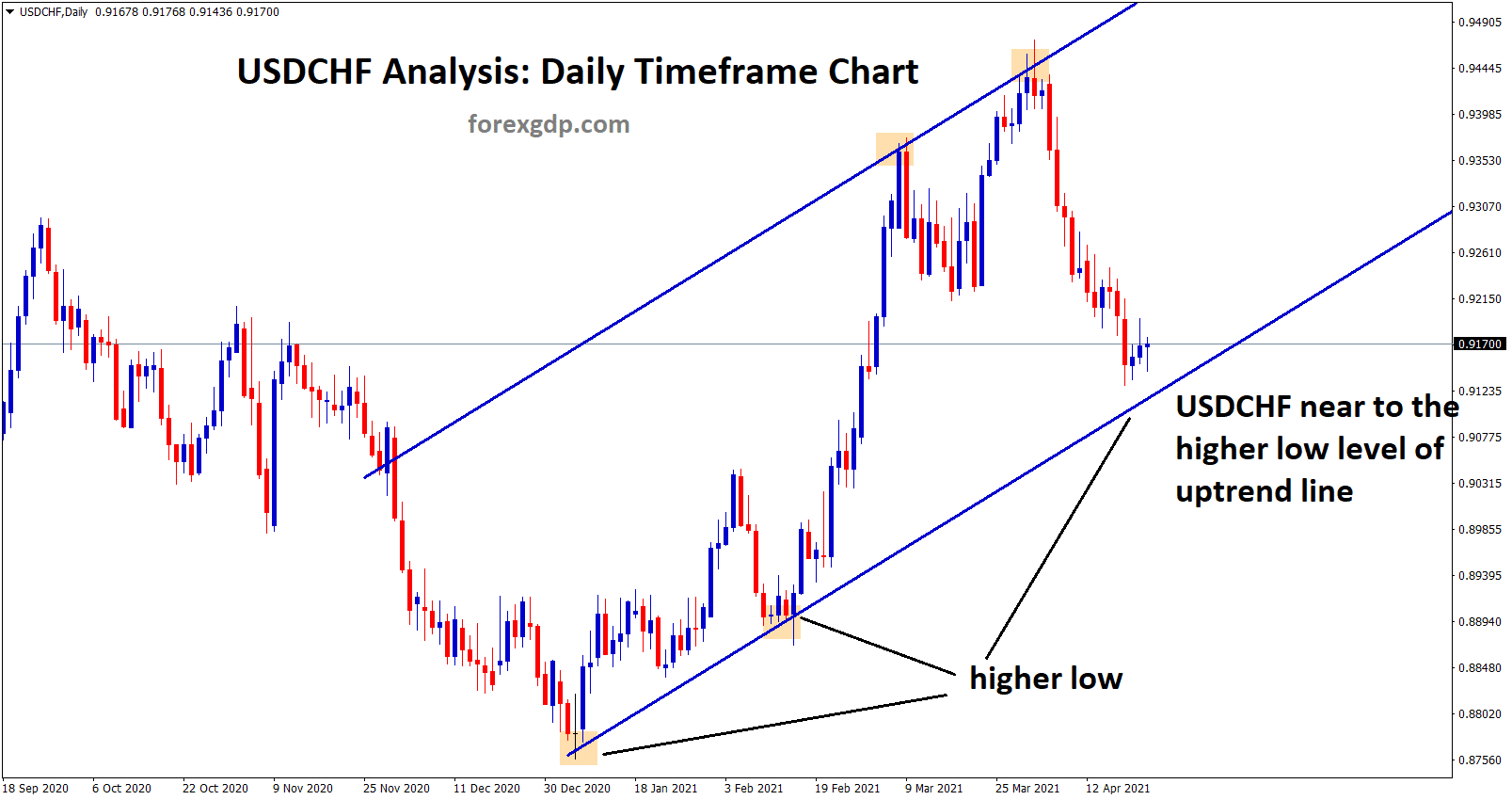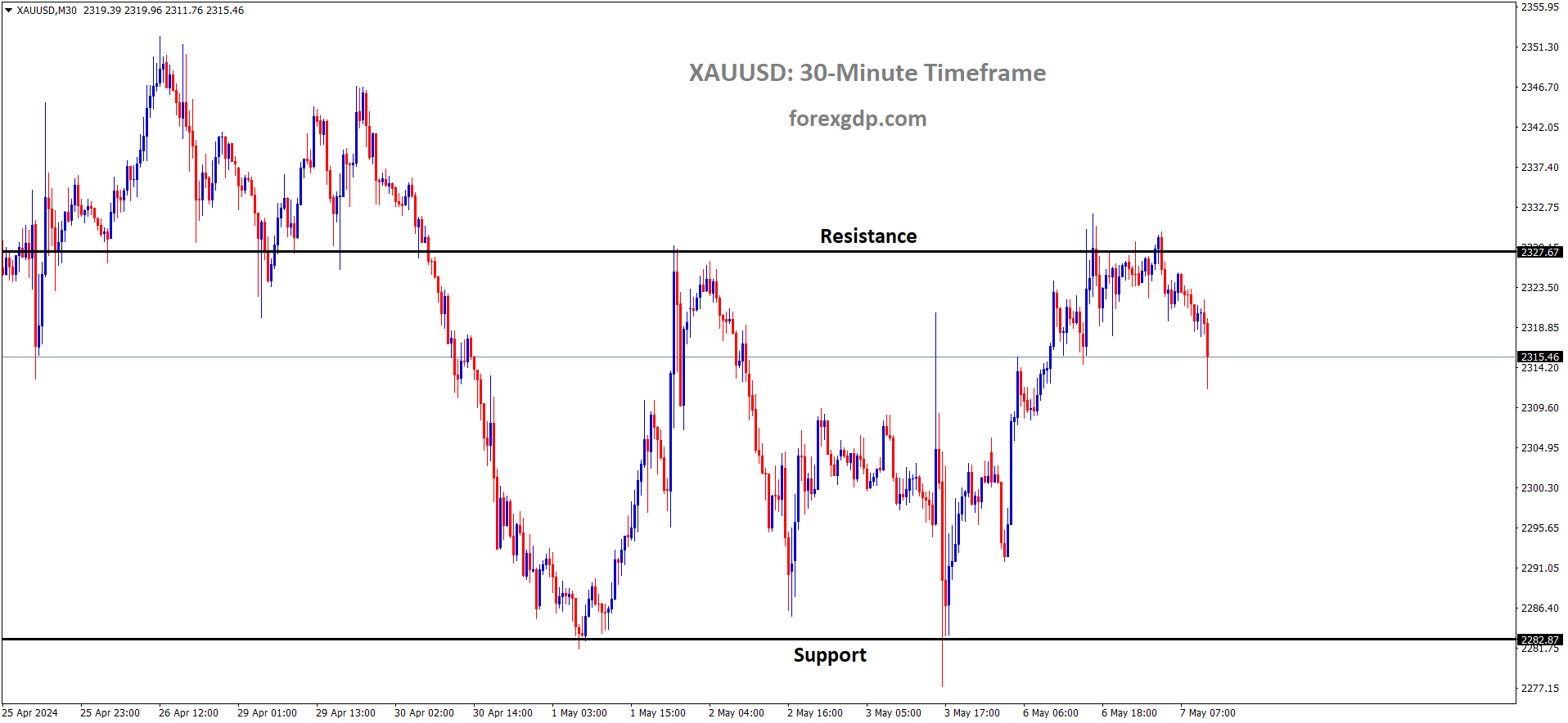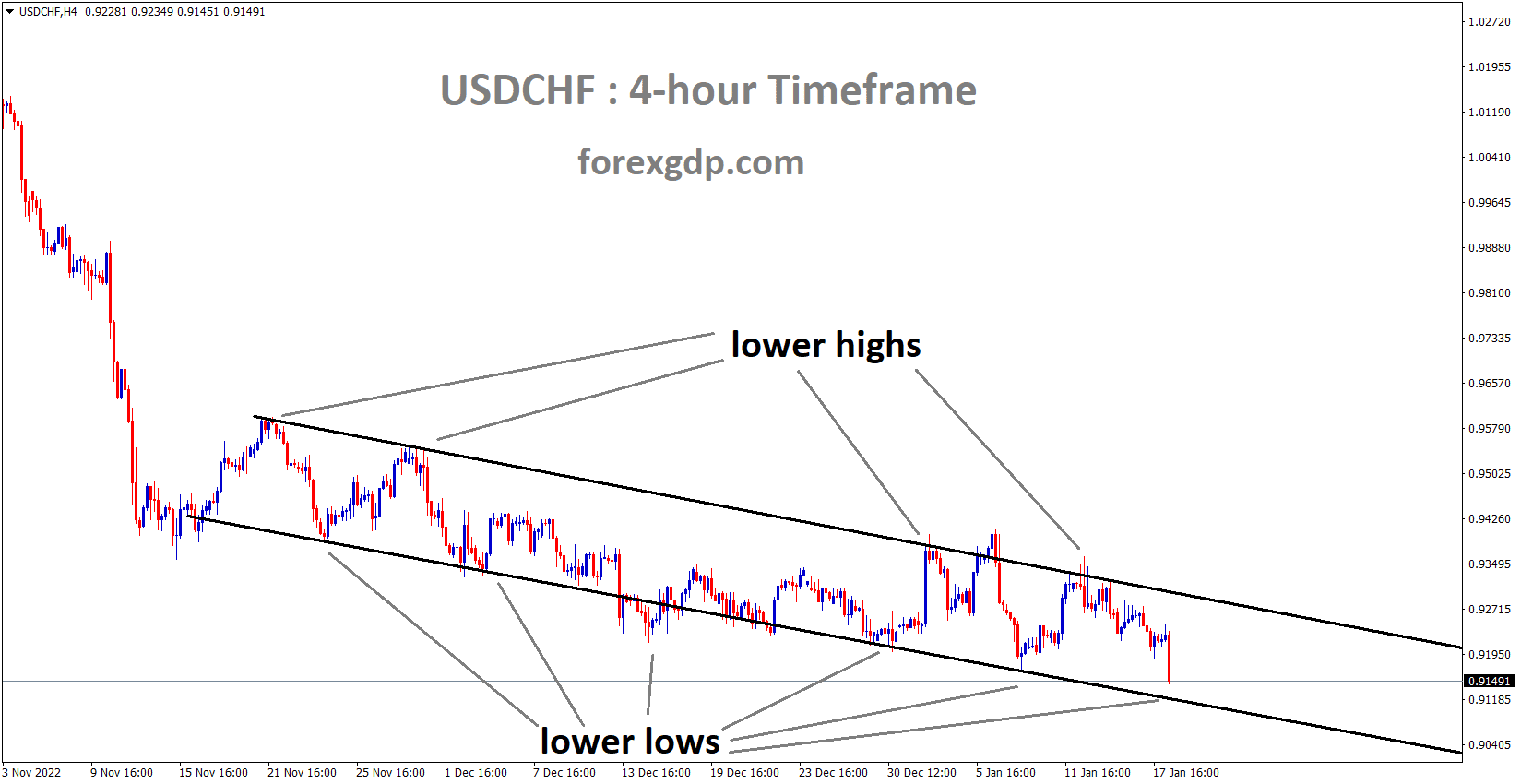USD: US Employment Cost Index up 1.2% in Q1 vs. expected 1%
The US Employment cost index for Q1 is rose to 1.2% from 0.90% printed in the last quarter, 1.0% expected rise. Compensation for civilian workers in the US increased to 4.2% in the 12-month period time of March 2024 and 4.4% printed in the last year March 2023. Wages and Salary increased to 4.4% in March 2024 when compared to 5.0% in the March 2023. US Dollar moved higher after the Salary index increased in this Q1 quarter and inflation will be trend to increase, FED will keep rates higher in the market.
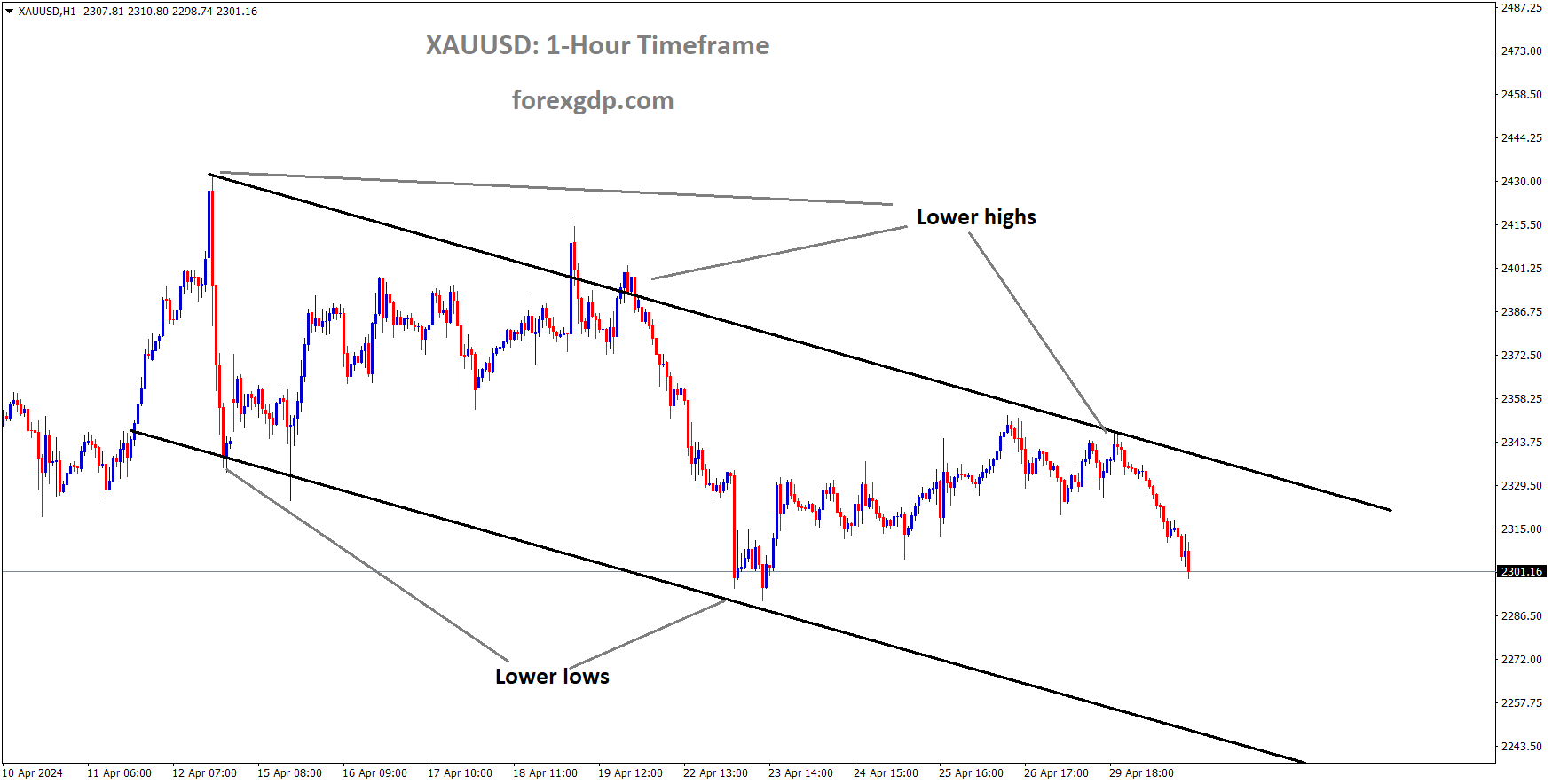
XAUUSD is moving in Descending channel and market has fallen from the lower high area of the channel
The US Bureau of Labor Statistics (BLS) released data indicating that the Employment Cost Index in the US experienced a 1.2% rise in the first quarter. This figure surpassed the market forecast of 1% and marked an increase from the 0.9% growth observed in the previous quarter of 2023.

According to the BLS press release, compensation costs for civilian workers saw a 4.2% increase over the 12-month period ending in March 2024, compared to a 4.8% rise in March 2023. Additionally, wages and salaries rose by 4.4% over the same 12-month period ending in March 2024, down from a 5.0% increase recorded in March 2023.
USD: US Employment Cost Index: Q1 at 1.2% vs. 1.0% Expected
The US Employment Cost Index for Q1 rose to 1.2%, marking a notable increase from the 0.90% reported in the previous quarter and surpassing the expected rise of 1.0%. This uptick indicates a strengthening trend in compensation for civilian workers in the US.
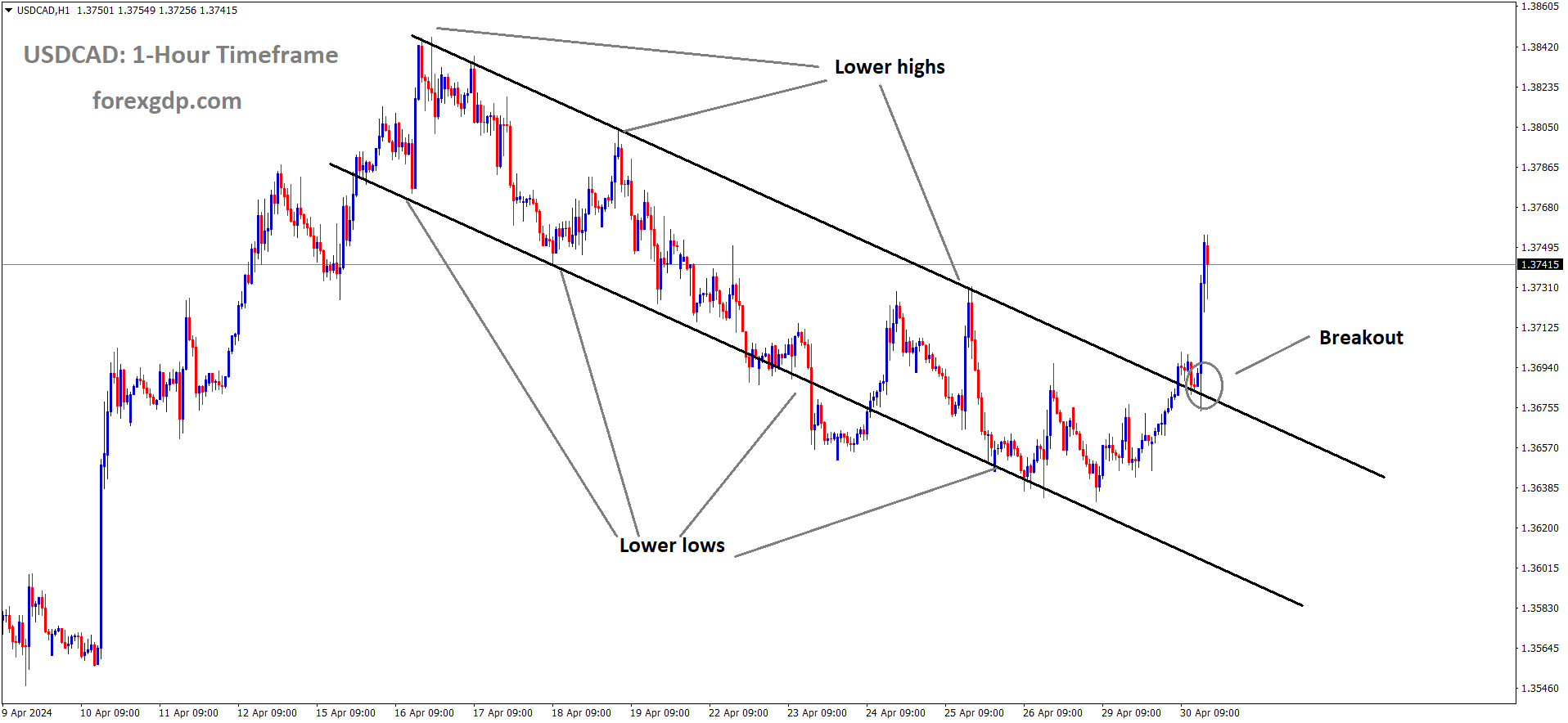
USDCAD has broken Descending channel in upside
Looking at the broader picture, compensation for civilian workers increased by 4.2% over the 12-month period ending in March 2024, slightly lower than the 4.4% recorded in the same period ending in March 2023. Similarly, wages and salaries saw a growth rate of 4.4% in March 2024, down from the 5.0% seen in March 2023.
The rise in the Employment Cost Index suggests a potential upward pressure on inflation, prompting expectations that the Federal Reserve (Fed) will maintain higher interest rates to curb inflationary pressures. Consequently, the US Dollar saw an upward movement following the release of the Q1 salary index data, indicating market anticipation of increased inflation trends.
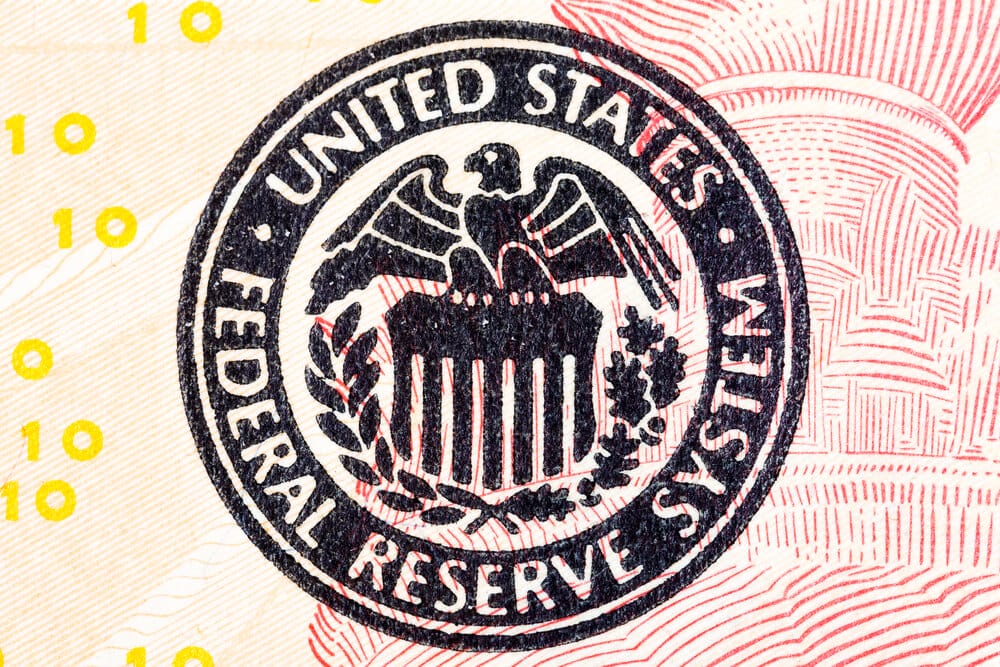
In the prior quarter, the Employment Cost Index rose by 0.9%, falling short of the expected 1.0% increase. However, in Q1 2024, it only grew by 0.2%, missing the anticipated 1.0% rise. Wages saw a 1.1% increase compared to the 0.9% recorded last month, while benefits also rose by 1.1%, up from 0.7% last month.
Year-over-year, while the numbers are lower compared to a year ago, they remain elevated. Overall compensation costs increased by 4.2% for the year ending in March 2024, down from a 4.8% increase in the previous year (March 2023). Wages and salaries rose by 4.4% for the year ending in March 2024, showing a decrease from the 5.0% increase in the year ending in March 2023. Benefit costs increased by 3.7% for the year ending in March 2024, compared to a 4.5% increase in the year ending in March 2023.
The Employment Cost Index is regarded within the Federal Reserve as the most reliable measure of compensation growth, making this report more hawkish. Consequently, US yields are responding by moving upwards.
USD: US labor costs rise in Q1 due to wages and benefits
In the first quarter, the US Employment Cost Index (ECI) surged to 1.2%, exhibiting a substantial uptick from the preceding quarter’s 0.90% and exceeding the anticipated increment of 1.0%. This pronounced rise signifies a robust escalation in remuneration for civilian employees across the nation.
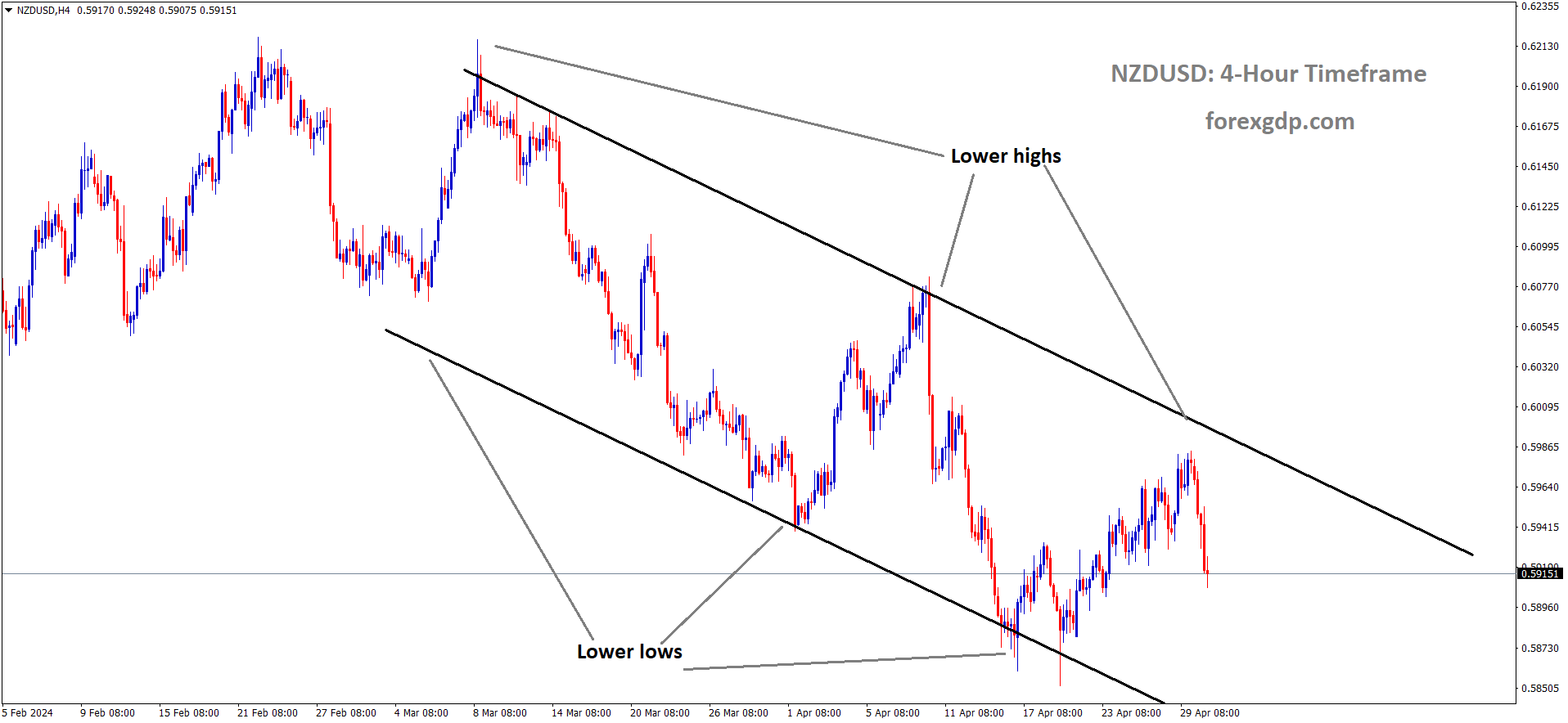
NZDUSD is moving in Descending channel and market has fallen from the lower high area of the channel
Delving into the broader context, the remuneration for civilian workers experienced a 4.2% upswing over the 12-month span ending in March 2024, marginally trailing the 4.4% growth recorded during the equivalent period ending in March 2023. Similarly, the expansion rate of wages and salaries stood at 4.4% in March 2024, exhibiting a downturn from the 5.0% observed in March 2023.
The ascent in the Employment Cost Index alludes to a potential amplification in inflationary pressures, thereby fostering the anticipation that the Federal Reserve (Fed) will persist with elevated interest rates to counteract such inflationary impulses. Consequently, the US Dollar witnessed an upward trajectory subsequent to the dissemination of the Q1 salary index data, signaling the market’s foresight of burgeoning inflationary tendencies.
In the first quarter, U.S. labor costs saw a greater-than-expected increase, primarily driven by a rise in wages and benefits. This upward trend in labor expenses aligns with the early-year surge in inflation, reinforcing expectations that an anticipated interest rate cut later in the year might be delayed. Despite some indications of easing in labor market conditions, the Labor Department’s report on Tuesday revealed a noticeable uptick in labor costs.
Federal Reserve officials, who commenced a two-day policy meeting on Tuesday, might find this data significant. While Fed Chair Powell has downplayed the significance of wages in the nation’s inflation outlook, the persistent increase in employment costs could pose challenges in combating inflation.
The Employment Cost Index (ECI), considered a comprehensive measure of labor costs, rose by 1.2% in the last quarter, surpassing the anticipated 1.0% increase. On a year-on-year basis, labor costs climbed by 4.2%. The ECI, being a key indicator of labor market slack and core inflation, is closely monitored by policymakers.
Amidst expectations that the Fed will maintain its benchmark overnight interest rate within the current range of 5.25%-5.50%, there are divergent views on the possibility of a rate cut. While some economists anticipate a reduction in borrowing costs by July, others believe the Fed’s room for easing monetary policy might be diminishing.

Wages in the January-March quarter rose by 1.1%, contributing to a year-on-year increase of 4.4%. Notably, wages for union workers surged by 6.3% compared to a 4.1% rise for non-union workers. Benefits also saw a notable increase of 1.1% in the first quarter, with a year-on-year advancement of 3.7%.
Overall, the robust increase in labor costs, as indicated by the ECI, suggests ongoing tightness in the labor market, underscoring the importance of continued monitoring by policymakers.
Don’t trade all the time, trade forex only at the confirmed trade setups
Get more confirmed trade signals at premium or supreme – Click here to get more signals , 2200%, 800% growth in Real Live USD trading account of our users – click here to see , or If you want to get FREE Trial signals, You can Join FREE Signals Now!


